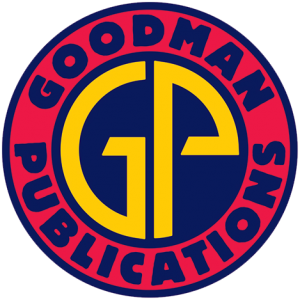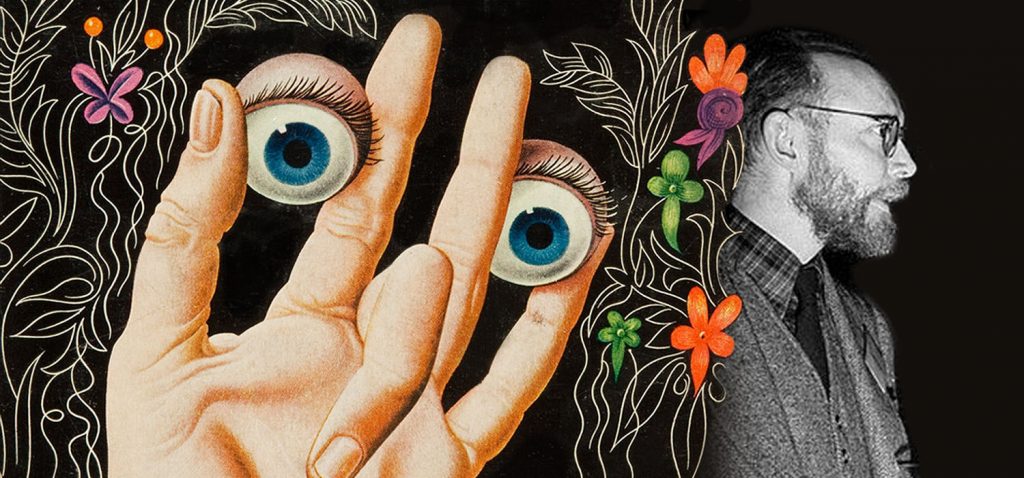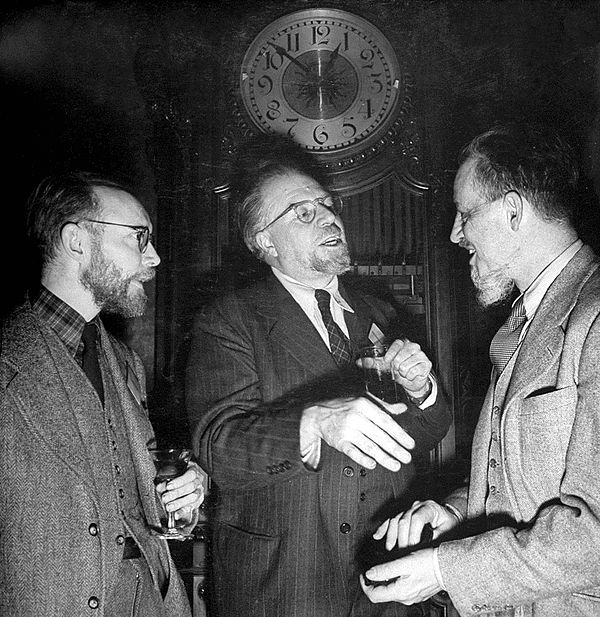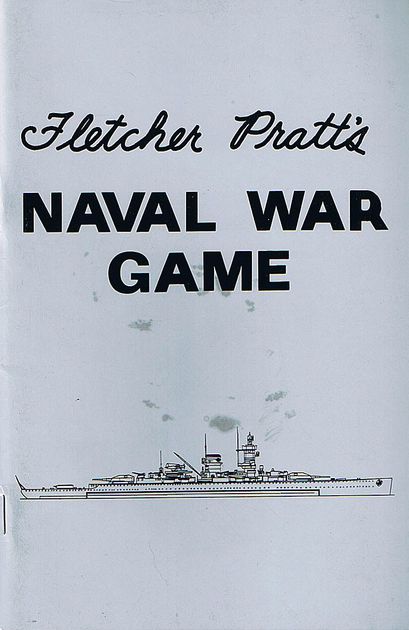Our Adventures in Fiction series is meant to take a look at the writers and creators behind the genre(s) that helped to forge not only our favorite hobby but our lives. We invite you to explore the entirety of the series on our Adventures In Fiction home page.
Adventures in Fiction: Fletcher Pratt
by Jeff Goad
The Appendix N is a list of prolific authors of science fiction and fantasy. But Fletcher Pratt is not one of them, at least not in comparison to most of the authors on the list. He primarily wrote historical nonfiction about the Civil War, Napoleon, naval history, rockets, and World War II. So why is Fletcher Pratt listed in the Appendix N and why does he have the coveted “et al” listed after The Blue Star?
Well, digging a bit deeper into his writings and his career, it is no surprise that Gary Gygax was smitten with this fellow….
Fletcher Pratt was a bearded, bespectacled, pipe-smoking intellectual who raised marmosets in his spare time. And if you don’t know what a marmoset looks like then I highly encourage you to pause reading this to do a quick Google Image search of these adorable mini-monkeys. I promise that you won’t regret it.
Between his New York birth in 1897 and his New Jersey death in 1956, he lived a fascinating 59 years. He was a self-educated college drop-out who worked as a librarian, a translator, and an author. He married a fashion artist and together they created their own elite New York literary circles. They hosted meetings of the Hydra Club, a social group of science fiction writers that included Frederik Pohl and Lester del Rey. He was a regular lecturer at the Middlebury College Bread Loaf Writers’ Conference where Isaac Asimov was one of his students. He co-founded the Trap Door Spiders, a males-only literary and arguing society that would invite a guest over for each meeting and the members would demand the guest to justify their existence and occasionally sent the guest home in tears. Regular members included Isaac Asimov, Lin Carter, L. Sprague de Camp, and Lester del Rey. L. Ron Hubbard was one of their more famous guests.
He also acted as the president of the Civil War Round Table and has since been memorialized with the “Fletcher Pratt Award.” It is presented by the Civil War Round Table to the author or editor of the best Civil War-themed non-fiction book of the year.
One very notable thing worth mentioning about Fletcher Pratt is that he is also known for enjoying and popularizing tabletop wargaming and he wrote the popular and influential Fletcher Pratt Naval War Game. This wargame from 1940 is still played today and many people reading this will already know that Dungeons and Dragons came into existence from the world of wargaming, of which Pratt was an early advocate. While his fiction may have inspired some of the Gygaxian esthetic of Dungeons & Dragons, this wargame may have also indirectly played a role in the creation of the world’s first fantasy roleplaying game.
As an author of science fiction and fantasy, his contributions are smaller in number than other authors on the list but he certainly has some notable contributions. He co-wrote the Harold Shea stories with L. Sprague de Camp. The collection of all the stories published in the pre-Appendix N era are best collected in The Compleat Enchanter. These stories are cited as a major inspiration for material, somatic, and verbal spell components, as well as one of the main sources of the D&D djinn, giant, and troll. He also co-wrote Land of Unreason and The Carnelian Cube with de Camp.
His solo works are more sober and mature in tone and lack the smug sense of humor found in his de Camp co-creations. The Blue Star was first published in 1952 but it was a title that was difficult to find until Lin Carter published it in paperback as the very first book in the beautifully-curated Ballantine Adult Fantasy series. At the time it was famous for being a fantasy story that tried to take a realistic look at how magic would be regulated and exploited if it truly existed. It is specifically cited in the Appendix N as recommended reading although it is more late-renaissance in setting, rather light on adventure, and rather heavy on sexual violence. Although it is a great example of careful and considerate world-building.
The Well of the Unicorn (written under the pseudonym of George U. Fletcher) isn’t specifically cited in the Appendix N, but it is listed in the “Inspirational Source Material” section of the Moldvay Basic Set. Both it and The Blue Star deal with sex, power, corruption, loss, and disappointment. They take a pointedly adult look at the genre, stepping away from the sexless and childlike whimsy and the simplistic good vs evil paradigm found in Narnia and to a lesser extent in the Hobbit and the Lord of the Rings trilogy.
While Fletcher Pratt on his own didn’t likely have a huge impact on the content of the original white box booklets or the AD&D manuals, his works tell us that we don’t need to tell children’s tales. Our fantasy worlds can have dragons and fairies and magic but they can also deal with larger, darker, and more universally human themes as well.
Today we celebrate the 122nd anniversary of Fletcher Pratt’s birth. Maybe today is the day to set an intention to finally pick up a copy of The Blue Star or The Well of the Unicorn and give it a read. And if you already have, then maybe today is the day to let us know what you think about Pratt’s literary contributions to the fantasy fiction of his era.








